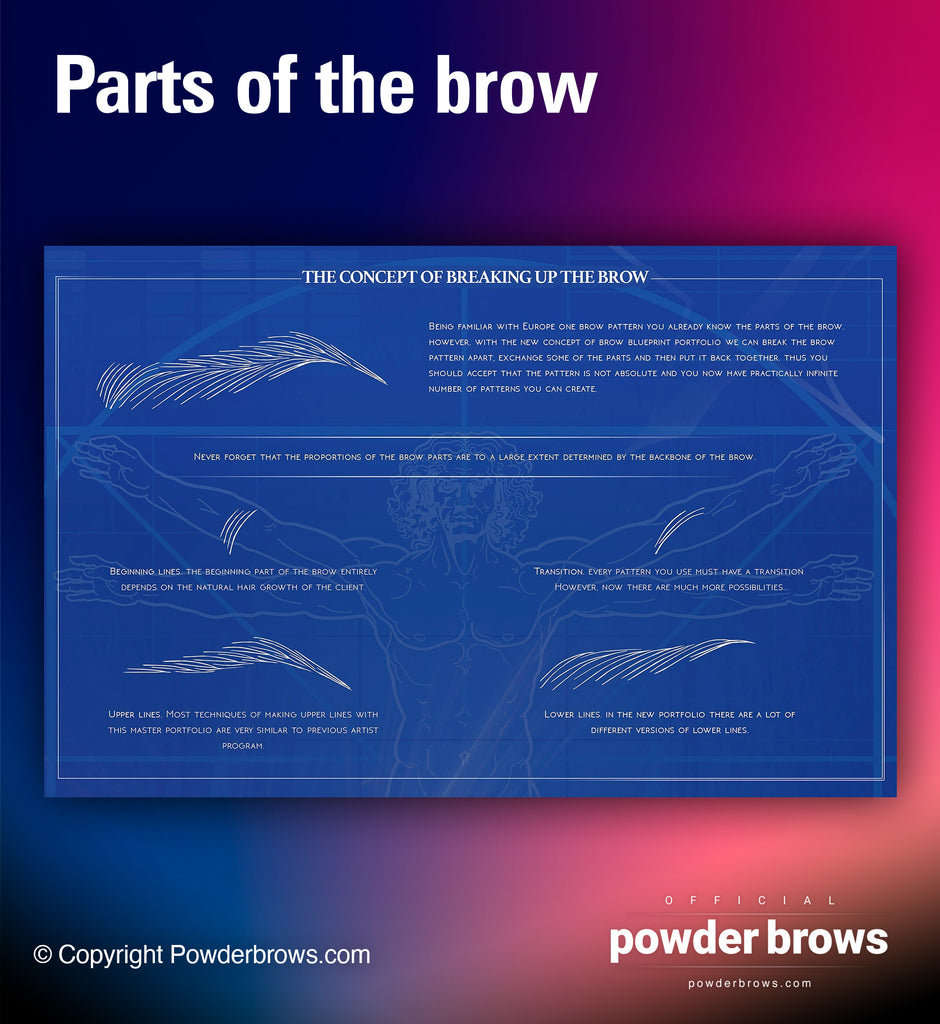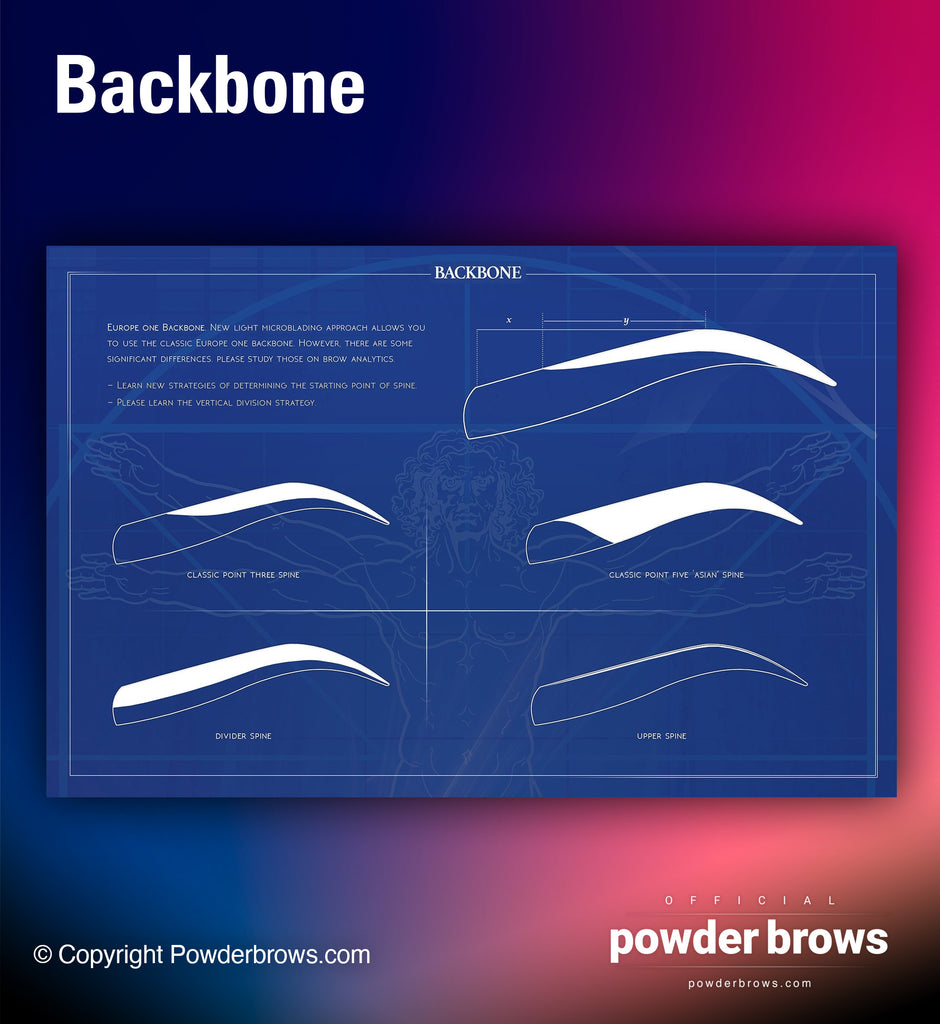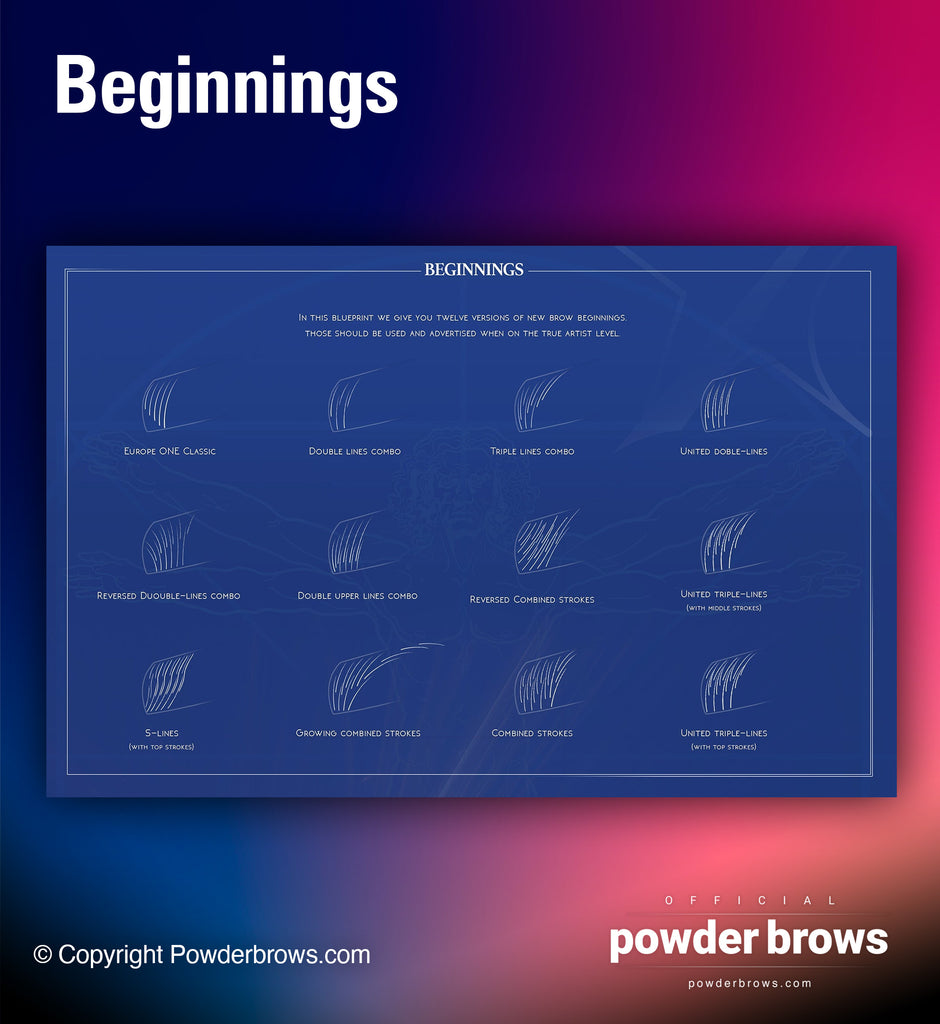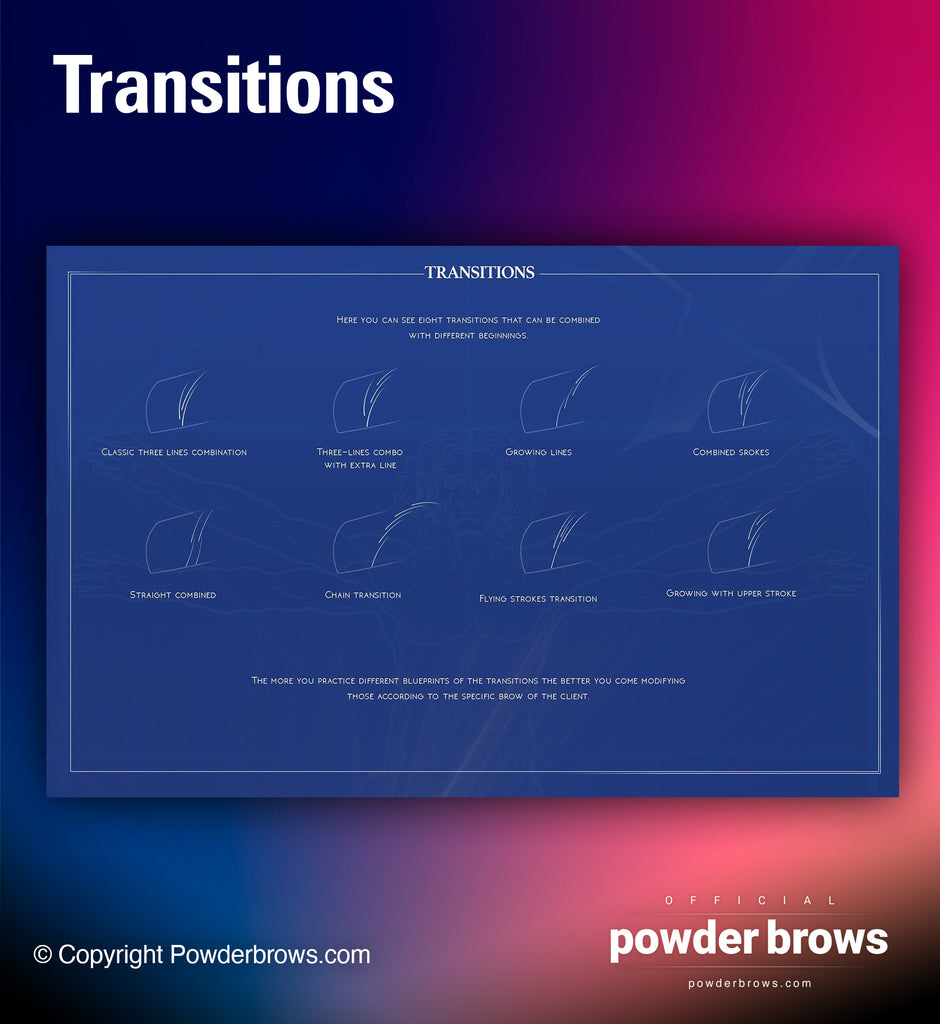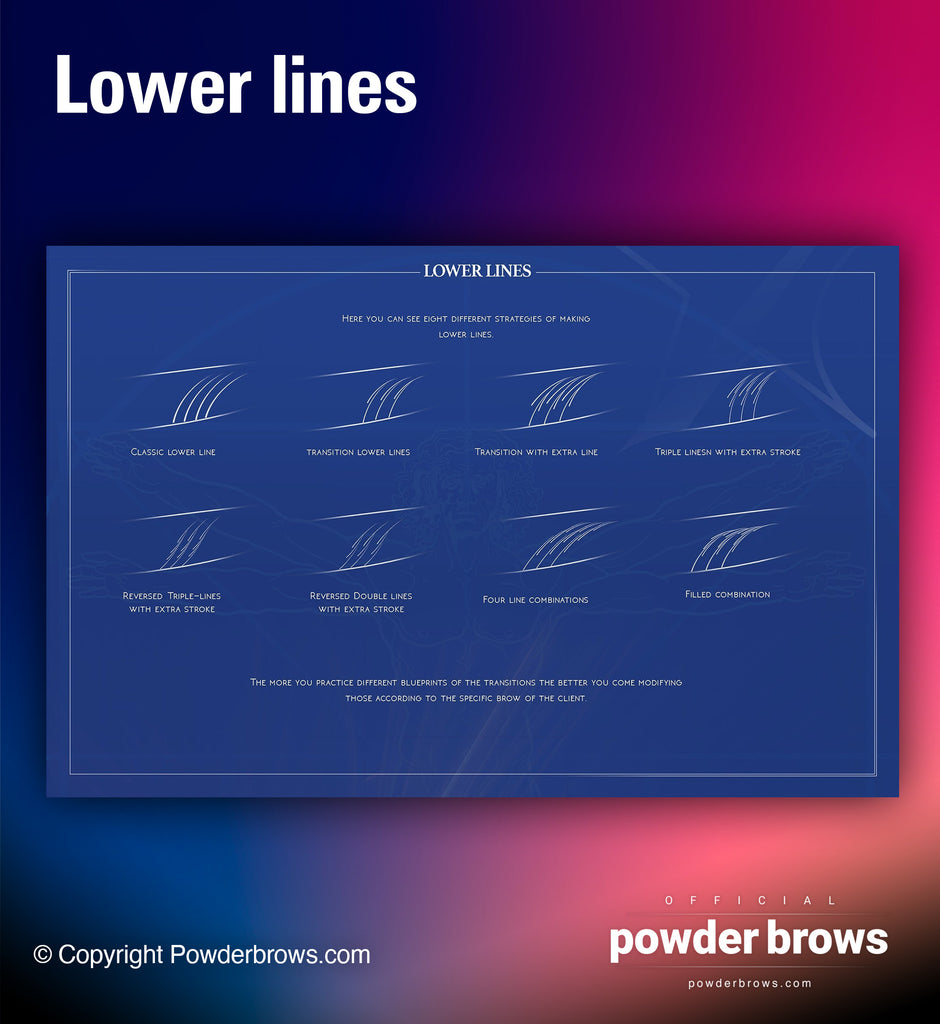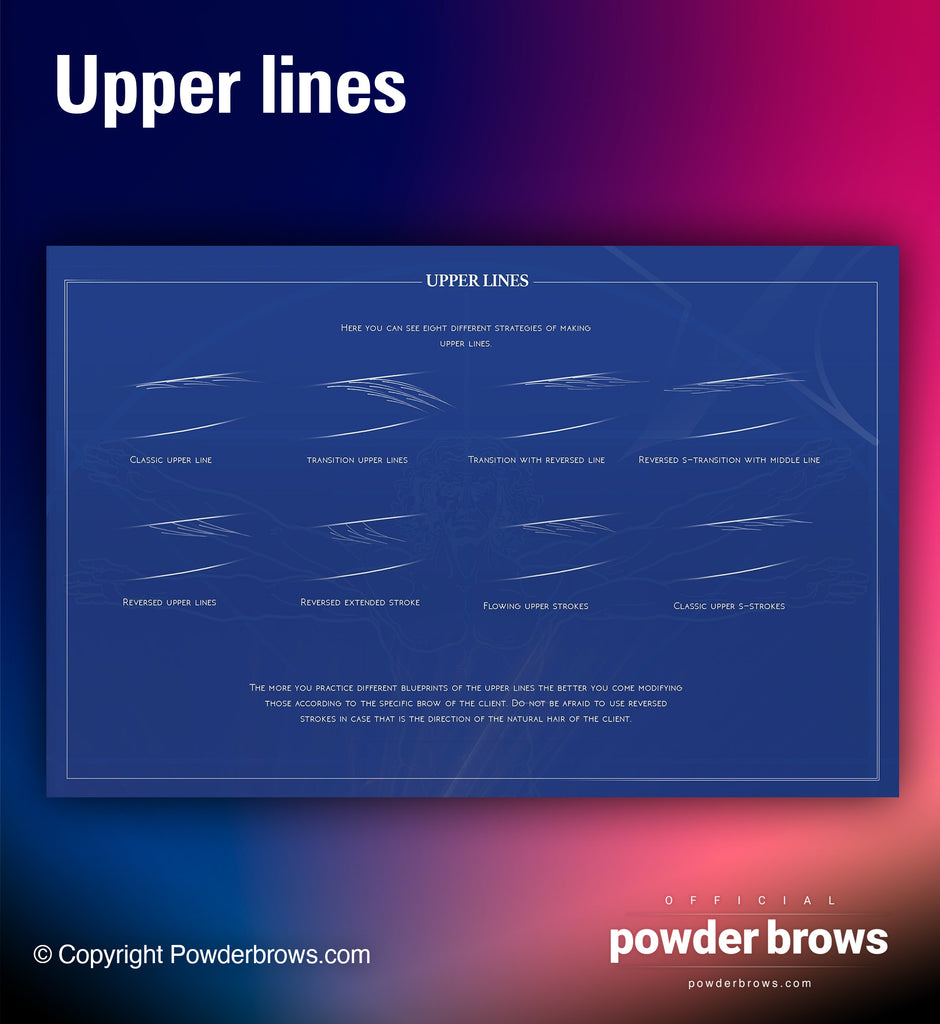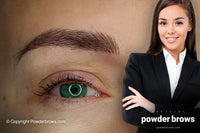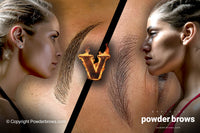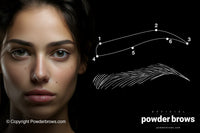7. Conclusions
As an artist, you should recognize the backbone as the central axis for the entire brow pattern, adhering to the golden ratio to ensure symmetry and balance, especially for clients with sparse or no natural brow hair.
It is crucial to select the beginning of the brow based on the client's natural hair growth, employing techniques like the "Europe One Classic" as a foundation while adapting to more sophisticated patterns for a natural appearance.
Mastering the transition between the beginning lines and the rest of the brow is essential. Ensure a seamless blend without gaps, as this indicates professional skill and affects the natural look of the brow.
When crafting lower lines, maintain symmetry and precision by marking starting points and differentiating between main and extra lines. Symmetrical main lines address the "filling" problem more effectively than numerous asymmetrical ones.
Adopting a systematic and symmetric approach for upper lines, ensuring they first rise towards the upper border before curving towards the backbone, enhances the brow's natural arch and aesthetic coherence.
The study shows that adhering to specific directional guidance for main upper lines towards designated points ensures a flow that complements the brow's natural shape.
Learning to create flawless upper lines takes significant practice. Professional training is invaluable for navigating the subtleties of microblading, empowering artists to achieve natural, balanced, and aesthetically pleasing brow patterns.
Readers suggest



